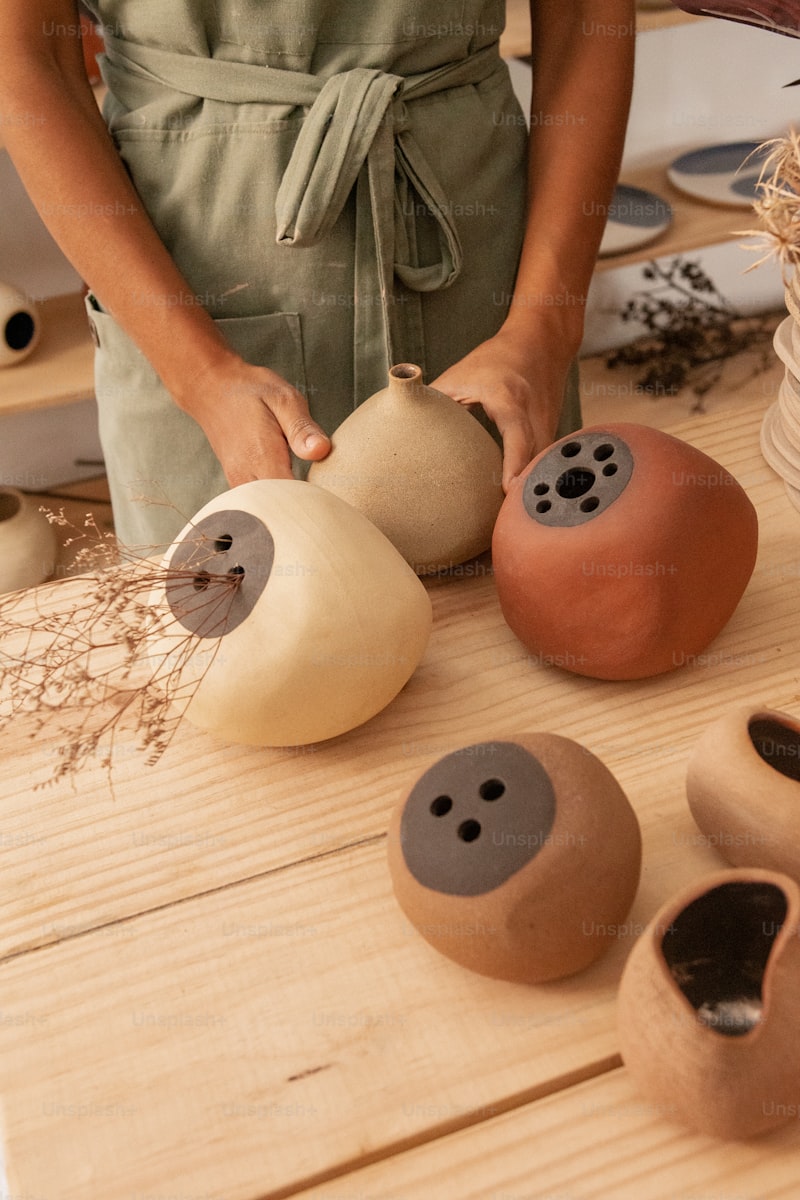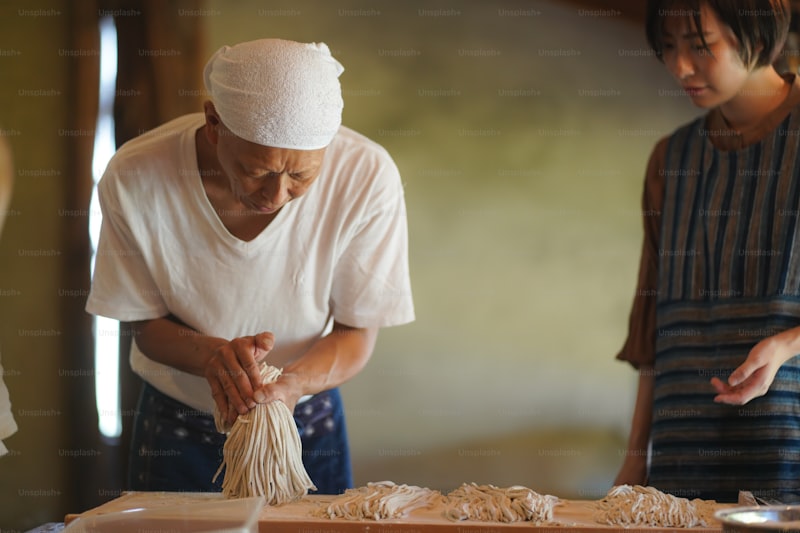
Take, for instance, the art of Japanese pottery, known as “Yakimono.” This ancient tradition dates back over a thousand years, blending meticulous skill with profound artistic expression. Artisans sculpt clay into forms that reflect the natural world, from serene tea bowls to ornate vases, each piece bearing the unique imprint of its creator’s hands.
In contrast, India’s rich tapestry of traditional crafts spans a kaleidoscope of colors and textures. The intricate embroidery of Kashmiri shawls, adorned with motifs inspired by nature, reflects a meticulous process that can take months to complete. Each stitch is a testament to the artisan’s dedication and skill, weaving stories of tradition and heritage into every thread.
Across continents, traditional crafts serve not only as cultural artifacts but also as economic lifelines for communities. In West Africa, the art of Adinkra cloth printing in Ghana stands as a symbol of identity and spirituality. The intricate patterns and symbols, stamped onto cloth with natural dyes, convey proverbs and philosophical concepts that have guided generations.
Closer to home, the Appalachian region of the United States boasts a legacy of handmade quilts, where every stitch tells a story of resilience and resourcefulness. These quilts, pieced together from scraps of fabric, embody the spirit of ingenuity passed down from pioneer ancestors.
Mastering Heritage: Unveiling the Secrets of Famous Traditional Crafts
Imagine stepping into a world where time-honored skills meet artistic mastery — that’s the essence of traditional crafts. These crafts aren’t just products; they’re stories woven into every stitch, every brushstroke, and every delicate detail. From intricate pottery to vibrant textiles, each piece carries a legacy of generations past.
Take pottery, for instance. Beyond its utilitarian purpose, pottery embodies the cultural heritage of civilizations. From the delicate designs of Ming Dynasty porcelain to the earthy tones of Native American pottery, each piece tells a tale of craftsmanship passed down through centuries.

Or consider the art of weaving. In cultures worldwide, weaving is more than a technique; it’s a rhythmic dance of threads, a symphony of colors. Whether it’s the rich tapestries of the Middle Ages or the intricate patterns of Persian rugs, each weave reflects the traditions and values of its creators.
These crafts are not just relics of the past; they’re living traditions that adapt and evolve with time. Artisans today blend ancient techniques with modern innovations, creating pieces that resonate in today’s world while honoring their cultural roots.
What makes these crafts truly remarkable is their ability to transcend time and connect us to our heritage. They evoke a sense of wonder and appreciation for the skills and dedication of artisans who keep these traditions alive. Each craft, whether it’s Japanese origami or Italian leatherworking, speaks a universal language of creativity and craftsmanship.
As we delve deeper into the world of traditional crafts, we uncover not just techniques but the stories of communities, the spirit of resilience, and the beauty of diversity. These crafts remind us of our shared humanity and the importance of preserving our cultural legacy for future generations.
In a world driven by technology and innovation, traditional crafts offer a glimpse into our past and a pathway to our future. They teach us patience, precision, and the value of handmade excellence. So, the next time you admire a handcrafted piece, remember that behind its beauty lies a story of mastery and a heritage worth celebrating.
Craftsmanship Through Generations: Celebrating Iconic Traditional Crafts
Craftsmanship, an art passed down through generations, stands as a testament to human creativity and dedication. In an era dominated by technology and mass production, traditional crafts hold a unique allure, embodying a rich tapestry of cultural heritage and skill. These crafts, painstakingly perfected over centuries, offer more than just products—they encapsulate stories of resilience, creativity, and community.
Take, for instance, the art of handloom weaving. From intricate patterns to vibrant colors, each fabric woven tells a story of the region it hails from. The rhythmic clack of the loom echoes the dedication of artisans who have honed their skills through years of practice. It’s not just about creating textiles; it’s about preserving a cultural identity woven into every thread.
Similarly, pottery, another ancient craft, transforms clay into vessels that blend functionality with aesthetic appeal. Each piece, shaped by skilled hands, carries the marks of its maker—a testament to the timeless beauty of handmade goods in a world often dominated by uniformity.
What about woodworking? From delicate furniture to sturdy structures, woodworking marries functionality with artistry. The smell of sawdust, the precision of carving tools, and the satisfaction of creating something tangible from raw materials—all these elements define the essence of craftsmanship.
These traditional crafts aren’t merely relics of the past; they are vibrant expressions of human ingenuity. They bridge generations, connecting modern-day artisans with their ancestors who mastered these crafts centuries ago. In a fast-paced world, they remind us of the value of patience, practice, and attention to detail.
As we celebrate these iconic crafts, we acknowledge the artisans who dedicate their lives to preserving them. They are the guardians of tradition, ensuring that future generations can marvel at the beauty and craftsmanship of handmade treasures. So, the next time you admire a handwoven textile or hold a handcrafted pottery piece, remember—it’s more than just an object; it’s a legacy woven with stories of passion and skill.
Timeless Artistry: Exploring the Legacy of Famous Traditional Crafts
In the world of craftsmanship, some traditions transcend time, leaving an indelible mark on culture and artistry. These timeless crafts, honed over centuries, embody the essence of skill, dedication, and cultural heritage. From intricate pottery techniques in Japan to the vibrant tapestries of Morocco, each craft tells a story of its own.
One such example is the delicate art of Japanese pottery, known as “Kintsugi.” This ancient practice involves repairing broken pottery with lacquer mixed with powdered gold, silver, or platinum. Instead of disguising imperfections, Kintsugi celebrates them, transforming flaws into beautiful veins of precious metal. It’s a metaphor for life itself — embracing scars and turning them into something exquisite.
Moving across continents to Morocco, we encounter the vibrant world of Berber rugs. Woven by skilled artisans using age-old techniques passed down through generations, each rug is a testament to Berber culture and craftsmanship. The intricate patterns and vibrant colors not only adorn homes but also carry stories of the land and its people, woven into every fiber.

In the heart of Italy, the tradition of Venetian glassmaking shines brightly. Dating back to the 13th century, Venetian glassmakers are renowned for their mastery of blowing, shaping, and coloring glass into intricate designs. From chandeliers to delicate figurines, Venetian glass reflects centuries of innovation and artistry, captivating viewers with its luminous beauty.
These crafts are not just products; they are legacies, preserved and nurtured by communities dedicated to their preservation. They embody the human spirit’s capacity to create, innovate, and pass down knowledge through generations. Each craft tells a tale of resilience, creativity, and the enduring power of tradition in a rapidly changing world.
As we delve into the world of these famous traditional crafts, we discover more than just objects; we uncover stories of passion, skill, and cultural identity. They remind us that artistry knows no bounds — it transcends time, enriching our lives with beauty and meaning.
From Hand to Heart: The Stories Behind Famous Traditional Crafts
Imagine holding a piece of history in your hands—not just any history, but the stories woven by generations of artisans. Traditional crafts carry with them a rich tapestry of culture, skill, and passion, passed down through the ages. Each artifact, whether a delicate piece of pottery or a sturdy hand-woven textile, bears witness to the dedication and artistry of its creators.
Take, for instance, the art of pottery. In villages nestled deep in the countryside, potters shape clay into vessels that tell tales of resilience and creativity. Each piece is more than just a functional object; it reflects the traditions and beliefs of the community. The process itself is a dance between hands and earth, where raw material transforms into vessels that hold both water and the spirit of the maker.

Moving to textiles, the looms come alive with the rhythmic clack of wooden shuttles. From the intricate patterns of Persian carpets to the vibrant hues of Indian sarees, each textile carries a narrative of its origin. The hands that dye the threads and weave the fabric impart not just color but also the soul of the culture they represent. These fabrics not only clothe but also connect us to the stories of our ancestors.
Woodworking, another timeless craft, transforms timber into functional art. From the simple elegance of Scandinavian furniture to the elaborate carvings of African masks, woodworking reflects both utility and symbolism. The tools may have evolved, but the reverence for wood and the skill to shape it remain unchanged across centuries.
Across the globe, artisans continue to breathe life into these traditions. They do so not merely for profit but to preserve heritage and pass on their skills to future generations. In their hands, crafts are more than economic activities; they are acts of love, creativity, and cultural identity.
Crafting Culture: Discovering the Artisans Behind Famous Traditional Crafts
In a world driven by mass production and technology, the essence of traditional crafts lies in the hands of skilled artisans. These craftsmen are not just creators; they are storytellers who weave history and culture into every piece they make. Whether it’s intricate pottery from a small village or delicate embroidery passed down through generations, each craft tells a tale of its own.
Take, for instance, the art of pottery in the quaint town of Oaxaca, Mexico. Here, artisans mold clay with a skill honed over centuries, creating vibrant ceramics that reflect the region’s rich heritage. Each piece is a masterpiece, painted with motifs that speak of ancient traditions and local folklore. The process itself is a dance of hands and clay, transforming raw earth into objects of beauty.
Similarly, in the heart of Kyoto, Japan, the art of kimono-making has been preserved through meticulous craftsmanship. From selecting the finest silk to hand-painting intricate patterns, every step in creating a kimono requires precision and patience. These garments are not just clothing; they are wearable art pieces that embody Japan’s reverence for beauty and tradition.
Closer to home, the intricate art of Native American beadwork tells stories of resilience and spirituality. Each bead stitched onto leather or cloth carries meaning, representing the natural world, tribal histories, and personal journeys. It’s a craft that connects generations and preserves cultural identity amidst modern challenges.
But what drives these artisans to dedicate their lives to traditional crafts? For many, it’s a deep-rooted passion for their heritage and a commitment to keeping their culture alive. Through their work, they bridge the past with the present, offering glimpses into worlds that might otherwise be forgotten.
Preserving History: The Enduring Appeal of Famous Traditional Crafts
Imagine walking through a bustling marketplace where artisans deftly weave intricate patterns into vibrant textiles or carve exquisite designs into solid wood. These scenes evoke a sense of timelessness, where craftsmanship meets artistry in a celebration of heritage. Traditional crafts, passed down through generations, hold a unique allure that transcends mere utility.

At the heart of this appeal lies the craftsmanship itself. Each piece crafted by hand carries with it the essence of the artisan’s skill and passion. Take, for example, the delicate art of pottery-making. From shaping the clay to firing it in a kiln, every step reflects centuries-old techniques refined over time. The result? Pottery that not only serves a practical purpose but also tells a story of cultural identity and artistic excellence.
Similarly, traditional crafts such as handmade textiles or metalwork embody cultural richness. They are more than just items; they are symbols of heritage and community. In many cultures, these crafts are deeply intertwined with rituals and ceremonies, from weddings adorned with intricately embroidered fabrics to religious festivals marked by ornate metal jewelry.
In today’s fast-paced world, the resurgence of interest in traditional crafts speaks volumes about our longing for authenticity and connection. Consumers are increasingly drawn to products that carry a narrative, a piece of history woven into their fabric. This trend reflects a shift towards sustainable consumption, where the emphasis is not only on quality but also on ethical production practices.
Moreover, traditional crafts provide economic opportunities in communities where they are practiced. They support local livelihoods and empower artisans to preserve their cultural heritage while earning a dignified income. This dual impact—cultural preservation and economic sustainability—underscores the importance of supporting traditional crafts in a globalized economy.
Frequently Asked Questions
Where can one experience traditional crafts firsthand?
Discover firsthand experiences of traditional crafts at cultural heritage centers, artisan workshops, and craft festivals globally. These venues offer immersive opportunities to engage with artisans, learn techniques, and purchase authentic handmade goods.
How can traditional crafts adapt to modern trends and technologies?
Learn how traditional crafts can successfully integrate modern trends and technologies, enhancing their appeal and relevance in today’s market.
What are some globally renowned traditional crafts?
Discover globally renowned traditional crafts that showcase cultural heritage and craftsmanship from around the world.
How can traditional crafts contribute to cultural heritage preservation?
Discover how traditional crafts play a vital role in preserving cultural heritage. Learn how these age-old practices safeguard cultural identity, transmit historical knowledge, and foster community pride and sustainability.
What are the economic benefits of supporting traditional crafts?
Learn about the economic benefits of supporting traditional crafts, including job creation, cultural tourism promotion, and local economic resilience. Discover how preserving these crafts can stimulate local economies and foster sustainable development.


